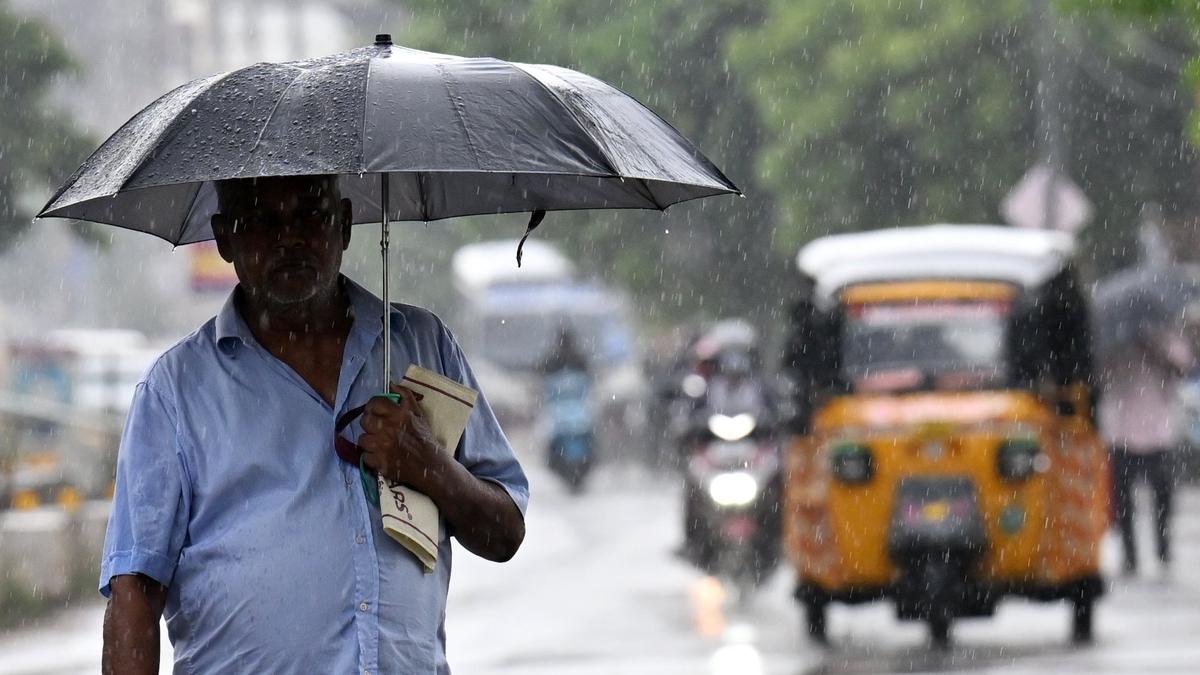Releasing a corporate sustainability report in Bengaluru recently, Karnataka’s Minister for Forests, Ecology and Environment Eshwar B. Khandre made a profound observation: ‘’If there is greenery, there is life; if there are forests, there is a future’’
Such lofty statements tend to put a gloss over the negative fallout of policy decisions that are antithetical to conservation. Ironically, the very department Mr. Khandre heads has taken decisions that jeopardises environment and ecology.
Be it the Sharavathi Pumped Storage project in Shivamogga or the micro-hydel projects in Cauvery Wildlife Sanctuary in Chamarajanagar, doing a U-turn on Goa-Tamnar power project, or failure to clear forest encroachments, the State’s policy is inconsistent with its avowed intention of forest protection. Activists perceive a pattern in the decision-making that prioritizes infrastructure over environment, which endangers ecological integrity.
Infra projects galore
The Sharavathi Pumped Storage Project threatens to inundate large tracts of evergreen forest in one of the few remaining biodiversity-rich landscapes in the Western Ghats.
The Karnataka Power Corporation Ltd (KPCL) is promoting the 2,000 MW pumped-storage hydroelectric facility. The project site is in an ecologically fragile and sensitive area. The scheme requires 42.51 hectares (105.05 acres) of forest land and 60.53 hectares (149.57 acres) of non-forest land from the Sharavathi Valley Lion-Tailed Macaque Wildlife Sanctuary.
This is besides the 11.64 hectares (28.76 acres) of forest land and 28.074 hectares (69.37 acres) of non-forest land proposed to be acquired from the sanctuary’s eco-sensitive buffer zone. The National Board for Wildlife (NBWL) has accorded ‘in-principle’ approval for the project for which the government of Karnataka and the State Board for Wildlife have given their consent.
The Sharavathi Valley is part of the Western Ghats biodiversity hotspot, and shelters numerous endemic and endangered species. This includes an estimated 700 lion-tailed macaques, which are among the world’s rarest primates.
Though a few members of NBWL made feeble attempts to oppose the project and questioned its economic feasibility, such objections were brushed aside.
As if to reduce the negative environmental impact, several ‘mitigation measures’ are being included in the project, and they are merely cosmetic in nature, which fails to minimise ecological damage.
There is a people’s movement brewing against the Sharavathi project. Activists under the banner of ‘Parisarakkaagi Naavu’, or People for Environment, met in Bengaluru on October 11 to express their opposition to the project. They pointed out that not all projects promoted under the banner of ’renewables’ are inherently sustainable or ecologically sound.
Opposing both the Sharavathi and Varahi Pumped Storage schemes, the citizens resolved that not only should they be scrapped, but future renewable energy planning must respect ecological integrity of the site.
Mini-hydel projects
Three mini-hydel projects have been proposed within the Cauvery Wildlife Sanctuary in Chamarajanagar district. If approved, they are bound to pose a threat to movement of wildlife, apart from disturbing the riverine ecosystem. While the government of Karnataka is yet to clear them, questions are being raised as to why there is no outright rejection of such proposals.
One is the renewal of diversion of 4.863 ha for the Ranganathaswamy Mini Hydel Project by Pioneer Power Corporation, a new diversion for the Bharachukki 2x2.5 MW Mini Hydel Project by Madhyaranga Energy Private Limited, and the re-diversion of part of the same land for a 24.5 MW project by Balaji Cauvery Power Private Limited.
While the extent of land diversion may appear small and insignificant when viewed in isolation, such projects collectively have a cascading negative impact. In the long run. They will undermine the ecological integrity of the surrounding landscape, according to Giridhar Kulkarni, wildlife conservationist.
Six tiger deaths
The imperatives of opposing these proposals also stems from recent tiger deaths — five in June 2025 and another in October — all of which are a direct fallout of retaliatory killings linked to escalating human–wildlife conflict in the MM Hills–Cauvery WLS landscape.
Such conflicts arise from habitat loss, disruption in prey–predator dynamics, and human encroachment, said Kulkarni in a memorandum to the Forest Department.
’Mini hydel projects’, despite their name, cause major ecological damage by way of tree-felling, impeding wildlife movement, creating habitat fragmentation, according to activists who have urged the government to take a firm stance against such proposals.
Incidentally, the Karnataka Elephant Task Force, which was constituted as per the orders of the High Court of Karnataka in 2012, in its report, noted that that key elephant habitats, including protected areas such as the Cauvery Wildlife Sanctuary and BRT Tiger Reserve, are covered under various leases and other concessions on forest land.
The task force suggested a time-bound restoration of the land as elephant habitats after making an inventory of such concessions and leases within the designated forests, and initiate necessary process. Activists have argued that extending the existing leases or issuing fresh permission for projects is not the way forward to restore elephant habitats.
Transmission line project
With respect to Goa–Tamnar 400 kV D/C Quad Transmission Line Project, the government has flip-flopped on its own decision. The project proposes to link the existing power grid at Narendra in Dharwad district with Xeldem in Goa with a 94-kilometre transmission line.
About 72 kilometres of the proposed transmission line is to be laid across forests within Karnataka. This includes a 6.6-kilometre stretch through the Anshi–Dandeli Tiger Reserve, one of the most sensitive wildlife habitats in the Western Ghats.
The project requires diversion of 177.091 hectares of forest land spread across Dharwad, Belagavi, and Uttara Kannada districts, and felling of over 62,000 trees as per the government’s own admission.
In March 2024, Mr. Khandre had cautioned officials against placing such projects on the table for approval.
But more recently, the Forest Department made U-turn on the original decision, and has asked the project proponents to modify the proposal with realignment of the line and other mitigatory measures.
Hubballi-Ankola line
The State Government’s ambivalence on the Hubballi-Ankola railway line and failure to take a firm decision against it is also fraught with danger, as large tracts of pristine forests in the Western Ghats will be fragmented with cascading negative impact on the environment.
These, and many such projects, would not only intensify fragmentation but increase conflict while undermining ecological stability of critical forest areas.
According to government statistics, Karnataka has lost 48 human lives due to elephant attacks during 2023-24, while 29 lives were lost in 2022-23. In 2021-22, there were 27 human deaths, and between 2019-20 and 2023-24, 160 people died in elephant attacks. Between 2021 and 2024, 12 people died in tiger attacks.
Forest Department’s e-Parihara dashboard indicates that 35,580 conflicts in which claims were raised, were reported during 2024-25 and ₹21.61 crore granted by way of ex-gratia. Of the 35,580 conflict incidents, 22,483 cases pertained to elephant attacks alone, followed by 6,226 cases related to wild boar, 3,738 cases related to leopard attack, and 554 cases pertaining to tiger attack.
These conflict incidents are a fallout of approving infrastructure projects in ecologically sensitives areas, coupled with encroachment, which is shrinking forest cover and escalating human-animal conflict in villages abutting forest boundaries. And it is the local and the marginalized communities that bear the brunt of such policy contradictions, which are inimical to environmental conservation.
Encroachment cases
Adding to the conflict and habitat disturbance is the forest encroachments. There is a backlog of such cases building up across Karnataka. The Forest Department’s annual report for 2024-25 indicates that there were 44,812 encroachment cases pending across Karnataka as on March 31, 2025. This includes 559 fresh cases added during 2024-25, raising concern over eroding forest cover and habitat fragmentation.
Bengaluru division alone has 4,849 forest encroachment cases in the areas covered by Bengaluru Urban, Bengaluru Rural, Ramanagara, Kolar, Chikkaballapura district and the Bannerghatta National Park. But the number of encroachments cleared across Karnataka was 243 cases during the year.
High conflict numbers in Bengaluru Circle
Given the extent of encroachment, the conflict numbers are also high in the Bengaluru Circle. As many as 8,149 crop damage cases were registered during 2024-25, apart from 1,123 cases of cattle kill, while across the State, 4,940 cattle kill cases were registered due to wild animal attack.
The forest cover in Karnataka spans an area of 40,678.23 sq.km, which is 21.21% of its geographical area of 1,91,791 sq. km. As per the annual report of the Forest Department of Karnataka, the percentage of forest area to geographical area was 22.64% in 2018-19.
Forest land diverted for infrastructure purposes over the years is chipping away the existing green cover.
Up to March 31, 2024, as many as 807 projects were cleared entailing transfer of 32,422.55 hectares, or 80,116.5 acres, of forest land for non-forestry purposes. This included 72 irrigation projects, 148 mining and allied projects, 83 road works, 19 railway projects, and 129 transmission line projects, among others.
During 2024-25, an additional 143 projects were cleared and 277.03 hectares, or nearly 684.5 acres of forest land, were diverted for non-forestry purposes. This included three for mining and allied category, and two for transmission lines.
Community support
Conservation in the Indian context is also about balancing community needs with forest protection, which calls for local support and engagement. But with increasing human deaths and crop depredation, the local community support for conservation is vanishing, which bodes ill for wildlife protection.
Even as the government’s rhetoric of sustainability and conservation has grown in recent years, so has the ecological imbalance and stress on the ground as evident in the official statistics.

 3 hours ago
4
3 hours ago
4








 English (US) ·
English (US) ·